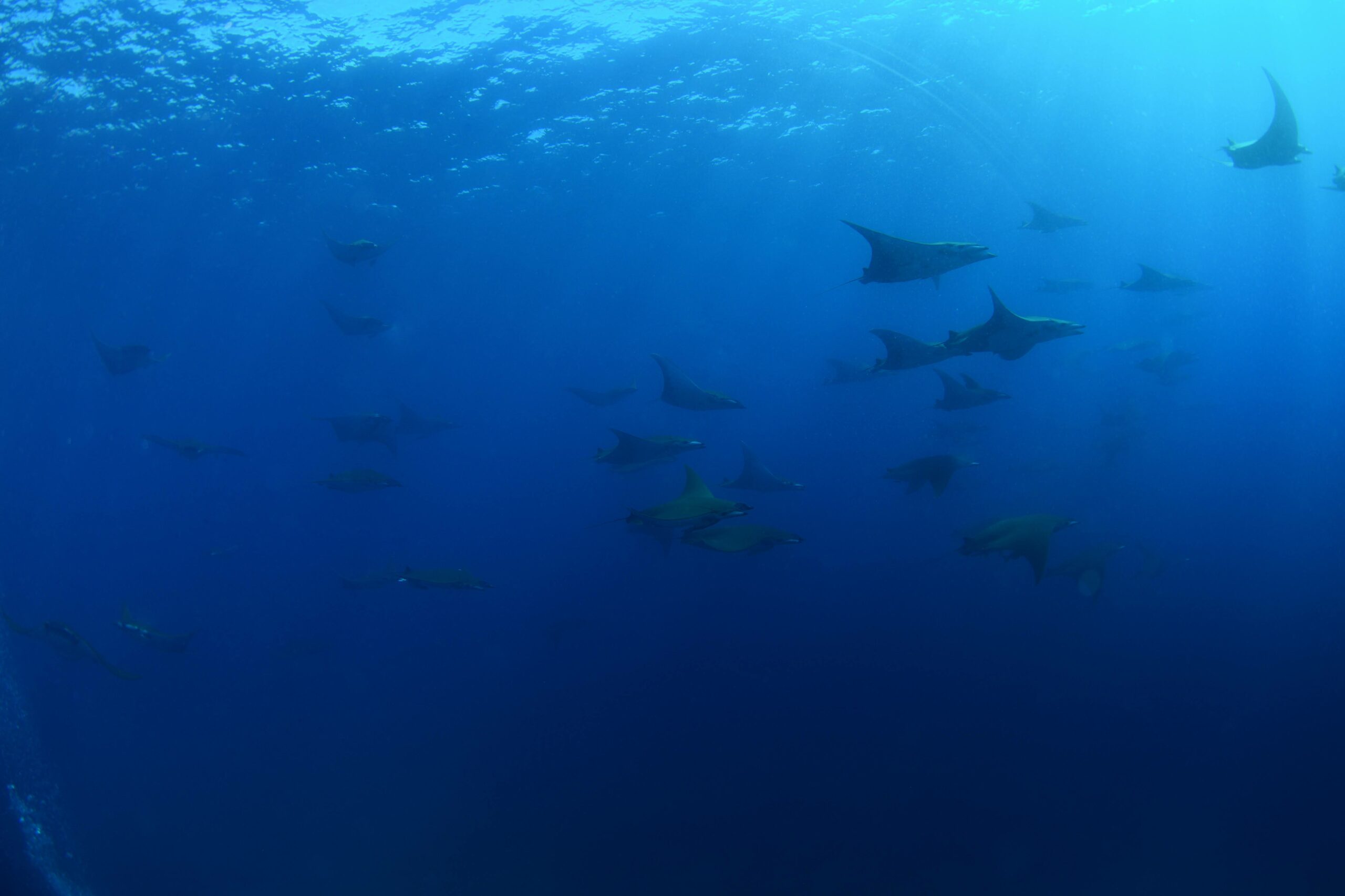Placing the spotlight on Mobula tarapacana aggregations in the Canary Islands
The first time I learned about Mobula tarapacana aggregations was during a webinar hosted by my now colleague, Ana F. Sobral, who was presenting the efforts of Manta Catalog in the Azores. At the time, I was on the island of El Hierro, engaged in fieldwork on beaked whales with the cetacean research group from the University of La Laguna. With our camp base in the small village of La Restinga, we were sharing the early mornings with the numerous dive centers. In La Restinga, it is common to see divers enjoying their surface intervals at the local bars, still clad in their wetsuits, eagerly recounting the wonders they had encountered during their previous dives. It was summer, and the divers emerged from their first dive brimming with excitement.
Beneath the waters surrounding the Canary Islands a mesmerising and lesser-known spectacle awaits – the congregation of the endangered Sicklefin Devil Ray (Mobula tarapacana). Groups exceeding 50 individuals of these graceful creatures approach the Canary Islands shores, offering unique experiences for those lucky enough to witness it.
Known aggregation sites for this species are scarce, with the neighbouring Azores archipelago renowned for them1. These encounters in the Canary Islands are comparatively less famous and less predictable (for now). Nonetheless, between May and September, locations such as El Mar de las Calmas in El Hierro attract divers eager to try their luck. These events have been documented across the other islands of the archipelago too.

A group of over 40 individuals of Mobula tarapacana sighted in the Canary Islands. Photo © Jose Manual Cruz Palacín | Buceo La Restinga dive center
In other places of the world, mobulids come together for different reasons such as reproduction and feeding events2. Yet, the enigma persists regarding the reason behind their gatherings in the Canary Islands.
The Eastern Atlantic has been identified as a priority area for the study and conservation of mobulids due to the ongoing unreported and unregulated fishery of this group off the African coast and the lack of knowledge on the species occurrence in the region3. Places such as the Canary Islands, where these pelagic and migratory animals approach and gather near the shores, offer unique opportunities for better understanding. In a region where mobulids are under anthropogenic pressures, the jurisdictional waters of the Canary Islands provide an area where direct fishing targeting the group is absent. Furthermore, other fishing techniques that pose a high risk of incidental capture for mobulids, such as commercial purse-seine and trawling4, are prohibited.
The Sicklefin Devil Ray, alongside with the rest of mobulid species, is protected under several international institutions and regulations. However, this protection has not been adopted into Spanish national laws. But change is on the horizon. Up until know, the lack of basic ecological and biological knowledge on the Mobulidae family archipelago was notable. The data collected through the Manta Catalog project aims to provide the necessary information to advocate for their inclusion, and ecotourism centres’ collaboration is being key for it. The involvement of ecotourism centres not only supports scientific research but can also aid in the promotion of responsible tourism practices. The aggregation of Mobula tarapacana groups, to
gether with the presence of other mobula species, highlights the need to place the Canary Islands on the conservation agenda for this threatened group of animals.
A Group of Mobula tarapacana sighted in La Palma. Video © Blue Magma Diving.
